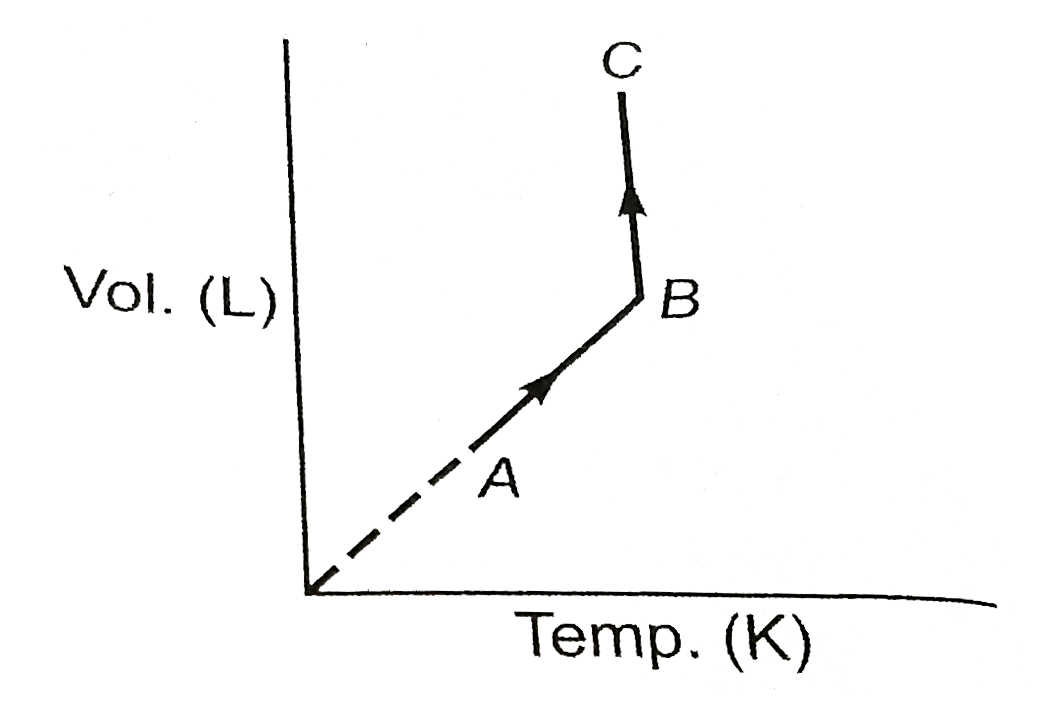At 25∘C,ΔG0 for the process H2O(l)⇔H2O(g) is 8.6kJ. The vapour pressure of water at this temperature, is nearlySolution in Telugu
24 torr
285 torr
32.17 torr
100 torr
The correct Answer is:A
At equilibrium ΔG∘=−RTlnKeq
where Keq=(PH2O/P∘) and P∘=1 bar
Topper's Solved these Questions
- BOOK - NARENDRA AWASTHICHAPTER - THERMODYNAMICSEXERCISE - Level 1 (Q.121 To Q.150)1videos
THERMODYNAMICS
- BOOK - NARENDRA AWASTHICHAPTER - THERMODYNAMICSEXERCISE - Level 2 (Q.1 To Q.30)1videos
THERMODYNAMICS
- BOOK - NARENDRA AWASTHICHAPTER - THERMODYNAMICSEXERCISE - Level 1 (Q.31 To Q.60)2videos
THERMODYNAMICS
- BOOK - NARENDRA AWASTHICHAPTER - STOICHIOMETRYEXERCISE - Level 3 - Subjective Problems20videos
STOICHIOMETRY
Similar Questions
Gasoline has an enthalpy of combustion 24000 kJ/mol gallon. When gasoline burns in an automobile engine, approximately 30% of the energy released is used to produce mechanical work. The remainder is lost as heat transfer to the engine's cooling system. As a start on estimating how much heat transfer is required, calculate what mass of water could be heated from 25∘C to 75∘C by the combustion of 1.0 gallon of gasoline in an automobile? (Given : C(H2O)=4.18J/g∘C)
View SolutionTwo moles of a triatomic linear gas (neglect vibration degree of freedom) are taken through a reversible process ideal starting from A as shown in figure.
The volume ratio VBVA=4. If the temperature at A is −73∘C, then :

(ii) Total enthalpy change in both steps is :03:23View SolutionA gas expands against a variable pressure given by P=20V (where P in atm and V in L). During expansion from volume of 1 litre to 10 litre, the gas undergoes a change in internal energy of 400 J. How much heat is absorbed by the gas during expansion?
View SolutionWhat volume of a liquid (in L) will contain 10 mole ? If molar mass of liquid is 280 and its density is 1.4 g/mL.
01:59View SolutionAt 25^(@)C , DeltaG^(@) for the process H_(2)O(l)iffH_(2)O(g) is 8.6 kJ. The vapour pressure of water at this temerapture, is nearly :
04:37View SolutionHeat of formation of H2O(g) at 25∘C is -243 kJ. ΔU for the reaction H2(g)+12O2(g)→H2O(g) at 25∘C is
05:05View SolutionWhich of the following is true for ΔH H2Ol⇔H2Og100∘C
View Solutionनिम्नलिखित अभिक्रियाओं के लिये सान्द्रता भागफल प्राप्त कीजिए -
H2O(l)⇔H2O(g).04:33View SolutionCalculate ΔH∘f for the reaction CO2(g)+H2(g)→CO(g)+H2O(g) given that ΔH0f for CO2(g),CO(g) and H2O(g) are -393.5 , -111.31 and −242kJ mol−1 respectively.
03:40View SolutionCalculate the standard enthalpy of formation of C6H6(l) at 25∘C temperature using the given data:
C6H6(l)+152O2(g)→6CO2(g)+3H2O(l),ΔH0=−781kcal
H2(g)+12O2(g)→H2O(l),ΔH0=−68.32kcal
C (s, graphite)+O2(g)→CO2(g),ΔH0=−94.04kcal.02:54View SolutionH2(g)+12O2(g)→H2O(l),ΔH at 298K=−285.8kJ
The molar enthalpy of vapourization of water at 1 atm and 25∘C is 44 kJ. The standard enthalpy of formation of 1 mole of water vapour at is04:03View SolutionVapour pressure of the water at 800C is "0.467atm." What is KC of the following equilibrium?
H2O(l) ↔ H2O(g)
(A) "0.8959mol/L
(B) 2.9×10−4mol/L
(c) 0.016mol/L
(D) 13.19mol/L01:47View SolutionFor the reaction H2O(s)⇔H2O(l) at ∘C and normal pressure
02:33View SolutionH2O(l)⇔H2O(s),ΔH=−q application of pressure on this equilibrium
04:18View SolutionPredict the sign of Delta S for the following process : H_(2)O_((g)) rarr H_(2)O_((l))
04:23View SolutionThe standard enthalpies of formation of H2O2(l)andH2O(l) are −187.8kJmole−1and−285.8kJmole−1 respectively. The ΔH0 for the decomposition of one mole of H2O2(l) to H2O(l)andO2(g) is
02:16View Solution

